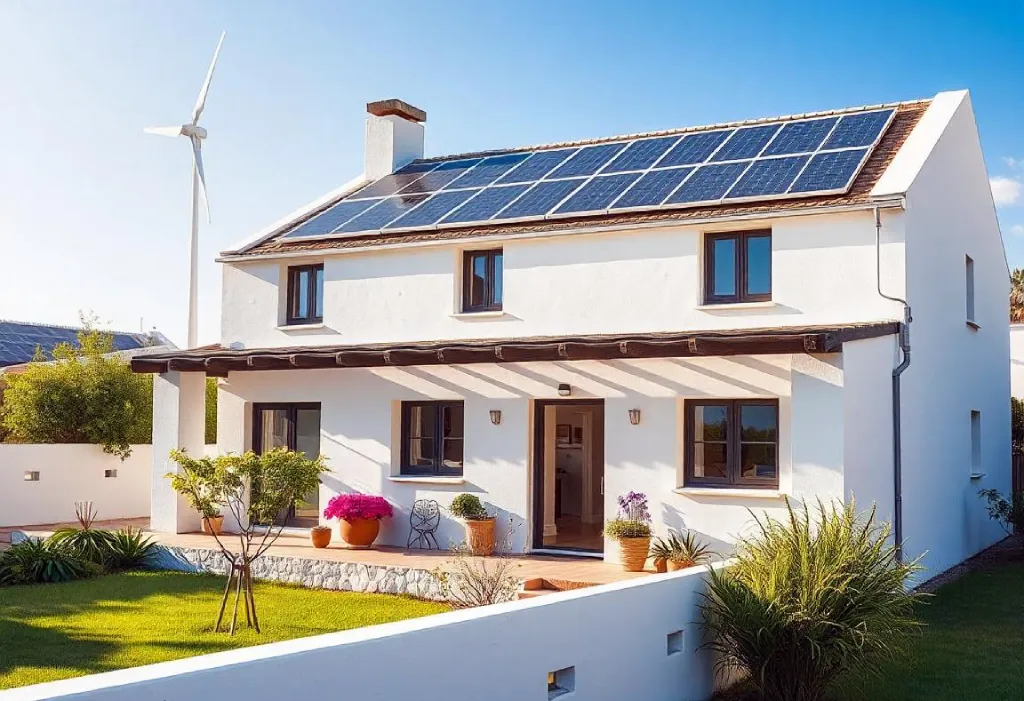Renewable Energy at Home: A Sustainable and Necessary Alternative
You have probably heard about renewable energy and the global effort to accelerate the transition to cleaner energy sources through specific environmental policies.
If you truly care about the future of the planet and the next generations, it is time to consider incorporating sustainable energy into your daily life, starting at home.
We would like to discuss this alternative in detail, which, in addition to protecting the environment, plays a key role in reducing greenhouse gas emissions and helps minimize the harmful effects of pollution on your health.
What is Renewable Energy?
Before delving into the topic, it is important to understand what renewable energy is. It comes from inexhaustible natural resources or those that can regenerate continuously, such as the sun, water, wind, and biomass.
Unlike fossil fuels, which generate high emissions of carbon dioxide (CO₂) and other pollutants, renewable energy offers a clean and sustainable solution for generating electricity and heat.
What is Not Renewable Energy?
Non-renewable energy comes from fossil fuels such as oil, coal, and natural gas. Their main drawback is that they take millions of years to form and, when burned, release large amounts of pollutants that contribute to climate change.
The environmental crisis we currently face is largely due to the dependence on these fuels. Therefore, the transition to renewable sources must be a priority both globally and domestically.
Benefits of Renewable Energy at Home
Adopting renewable energy at home offers multiple advantages, both economic and environmental:
- Reduction of emissions: By using clean energy sources, the carbon footprint is reduced, helping combat climate change.
- Inexhaustible resources: Energy sources like solar, wind, and biomass are always available and can naturally renew themselves.
- Improved quality of life: Reducing air and water pollution contributes to better health for the whole family.
- Economic savings: Some options, such as photovoltaic solar energy, allow for energy self-sufficiency and lower electricity bills. Others, like aerothermal and geothermal energy, can reduce energy consumption by up to 80%.
- Accessibility in remote areas: In rural communities, renewable energy can provide electricity without the need for large infrastructures.
- Energy independence: Reduces dependence on resources controlled by geopolitical conflicts, as renewable energy is available worldwide.
Types of Renewable Energy for the Home
The choice of a specific energy source will depend on your home’s specific needs and the surrounding environment. Below are some viable options for home installation.
1. Photovoltaic Solar Energy
This is the most accessible and well-known option for generating electricity at home. It involves installing solar panels that capture solar radiation and convert it into usable energy. Some panels are fixed, while others can move to optimize sunlight capture. In countries with high sun exposure, such as Spain, it is a particularly efficient alternative.
2. Solar Thermal Energy
Uses solar radiation to heat a fluid inside, generating hot water and heating. It can also power cooling systems. These panels are commonly seen on building rooftops, as many modern constructions include this technology to reduce energy consumption.
3. Wind Energy
Although less common in residential settings, wind energy allows electricity generation through wind-driven turbines. For home installation, it is essential to assess whether the area has sufficient wind and if local regulations allow the placement of these devices.
4. Bioenergy (Biomass)
Based on the combustion of organic matter, such as wood, agricultural waste, or forest residues, to generate heat and electricity. Biomass boilers are an efficient and economical option for home heating, with savings of up to 70% compared to fossil fuels.
5. Geothermal Energy
Harnesses heat from the Earth’s interior to climate-control homes without generating pollutant emissions. It is an ideal alternative in volcanic areas or regions with significant geothermal activity.
6. Hydraulic Energy
Although commonly associated with large hydroelectric plants, small water drops can also be used to generate electricity in homes near rivers or moving water sources.
Conclusion
Incorporating renewable energy into your future project is a smart and responsible decision. Not only does it help reduce pollution and associated health problems, but it also ensures a more sustainable future for future generations.
If we truly want to combat climate change and reduce our dependence on fossil fuels, we must start at home. At RialtoSur, we help you explore various renewable energy options and evaluate which one best suits your home—a crucial first step in this ecological transformation.
